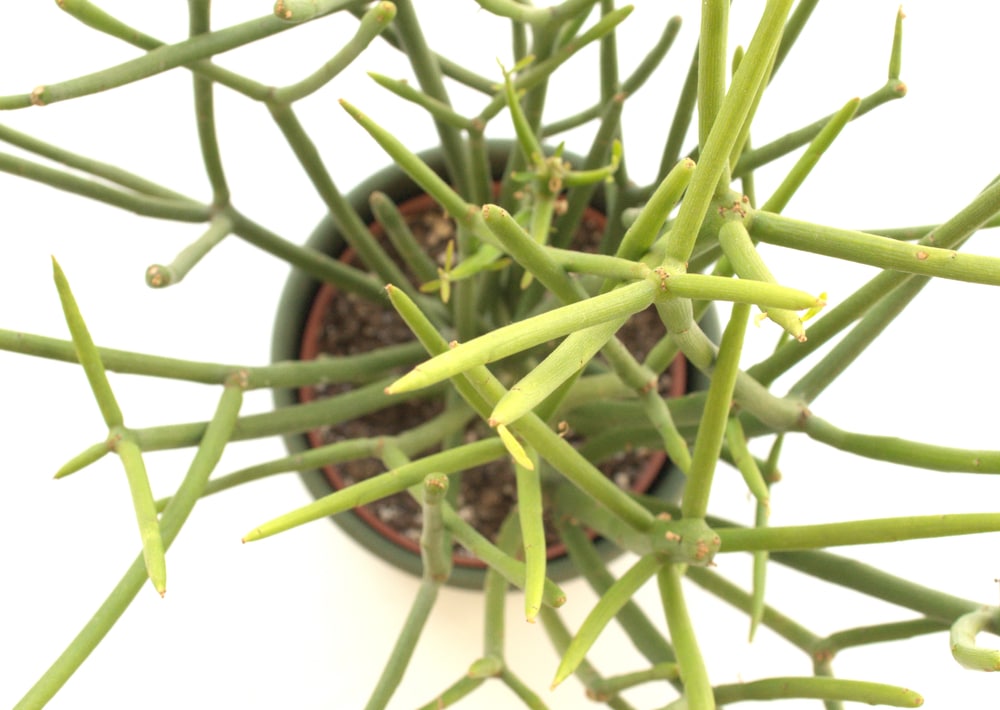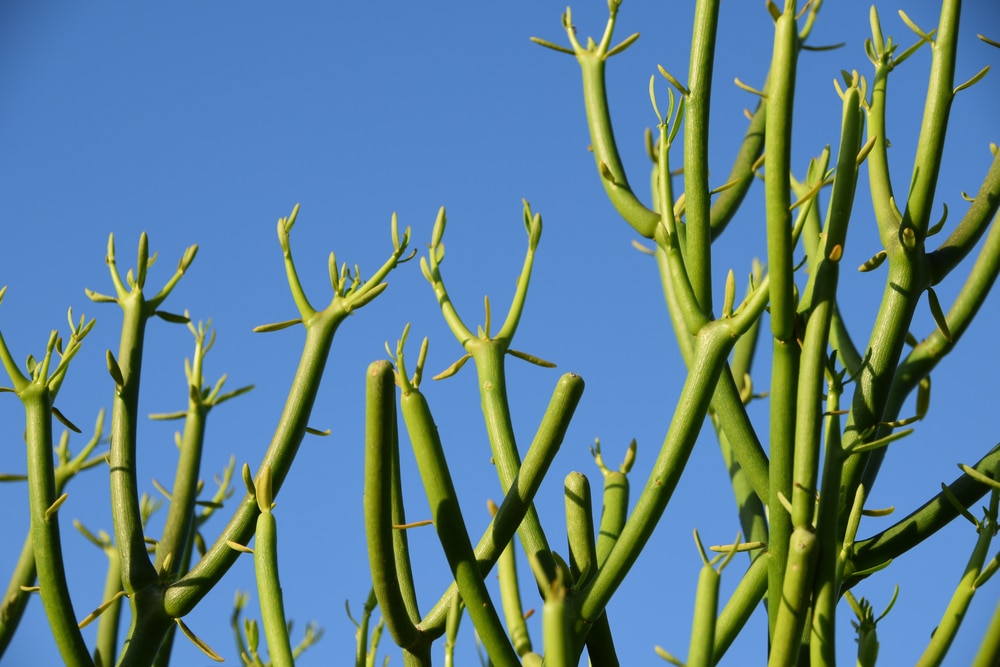The unique branches on a pencil cactus make it a fun indoor plant. Create even more of these succulents through propagation.
What Is a Pencil Cactus?

The pencil cactus is a succulent native to dry and tropical climates. Outdoors in its traditional habitat, the pencil cactus grows up to 30 feet tall. However, kept indoors, this plant stays small.
You can spot a pencil cactus by its long and cylindrical branches and small yellow flowers that bloom on the cactus in the spring and summer. The branches start green and turn brown as the succulent ages. Botanists named it the pencil cactus because these branches resemble pencils.
Pencil Cactus Propagation
You can propagate a pencil cactus from its cuttings. The best time for this process is during the spring and summer while the plant is still growing.
Before propagating, wear protective gear like goggles, long sleeves, and gloves to shield your body from the pencil cactus sap. This sap may cause allergic reactions ranging in severity from skin irritation to blindness. Sanitize your metal shears before use. This prevents any cross-contamination from other plants.
Here is how to propagate a pencil cactus:
- After disinfecting your shears, find a branch and cut a four to six-inch long piece.
- Place your cutting in a glass of water to prevent any seepage
- Once your cutting stops leaking sap, remove it from the water. Set the cutting aside, allowing it to dry. This takes about a week. A thickened film or scab should form over the cut area.
- Plant the cutting in soil, and place it in a sunny location. Water occasionally, just enough to keep the soil moist.
- You should notice new growth in a few weeks.
Caring for Your Pencil Cactus
After propagation, your pencil cactus cutting requires a low-maintenance effort. Here is everything you need to know about pencil cactus care.
Sunlight
Since pencil cacti are native to tropical climates, it requires full sun. This means a pencil cactus needs at least four to six hours of direct sunlight every day to maintain health. Most pencil cacti even tolerate more than six hours per day. More sunshine is best!
Plants use the sun as energy for growth through the photosynthesis process. Thus, too much shade will starve the pencil cactus.
Water and Soil Needs
A pencil cactus needs water sparingly, depending on the season. In the spring and summer, water your pencil cactus every few weeks. In the fall and winter, water this succulent even less, about once a month. Over-watering can cause root rot.
Dry soil is best for this plant. Pencil cacti are quite hearty, meaning they do not need nutrient-rich soil. Instead, it prefers something with a sand-like texture. Many home and garden centers also sell cactus potting mix, which works well.
Temperature Requirements
The pencil cactus appreciates warm environments. Ideal temperatures for this plant range from 65-70 degrees Fahrenheit. Never let a pencil cactus grow in rooms below 50 degrees Fahrenheit, and keep the plant away from air conditioners and open windows.
Pencil cacti also love low-humidity settings. Lower humidity levels ensure that the soil does not retain any excess moisture from the air. If you are worried about humidity levels, consider moving your pencil cactus to a new space or purchasing a dehumidifier.
Pruning
Once your pencil cactus cutting grows into a larger plant, pruning becomes an essential part of maintaining its health. As with propagation, wear protective goggles, clothing, and gloves, as the sap irritates the skin.
Using disinfected shears to cut any dead or decaying branches from the succulent. Next, you can begin trimming other branches, shaping your pencil cactus accordingly. And finally, wipe away any stickiness on your shears before putting them away.
